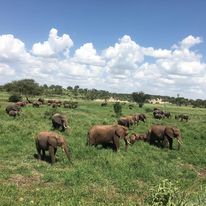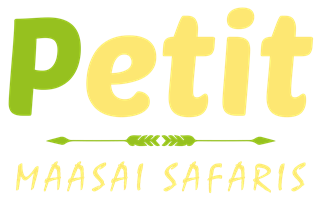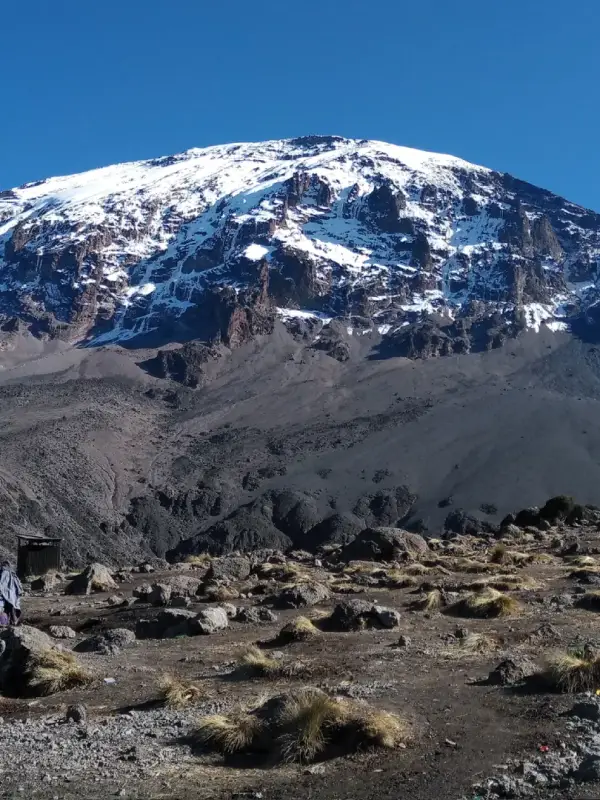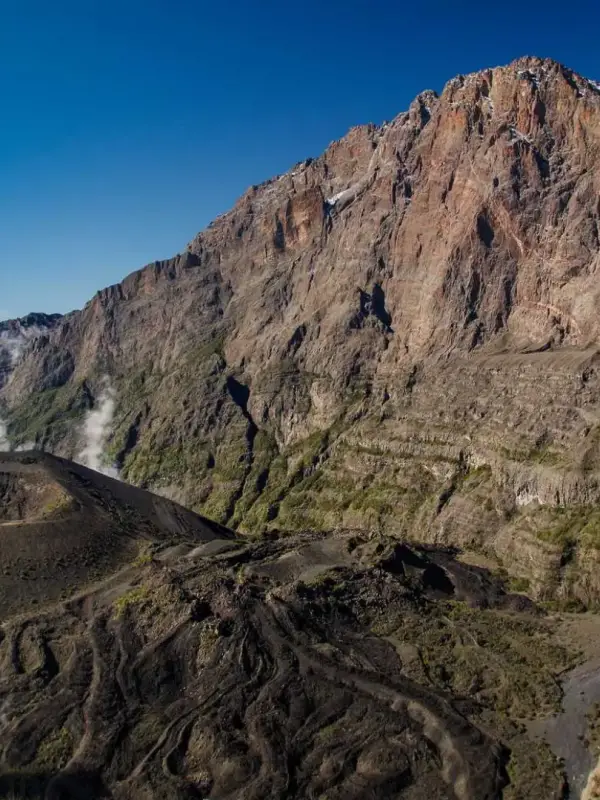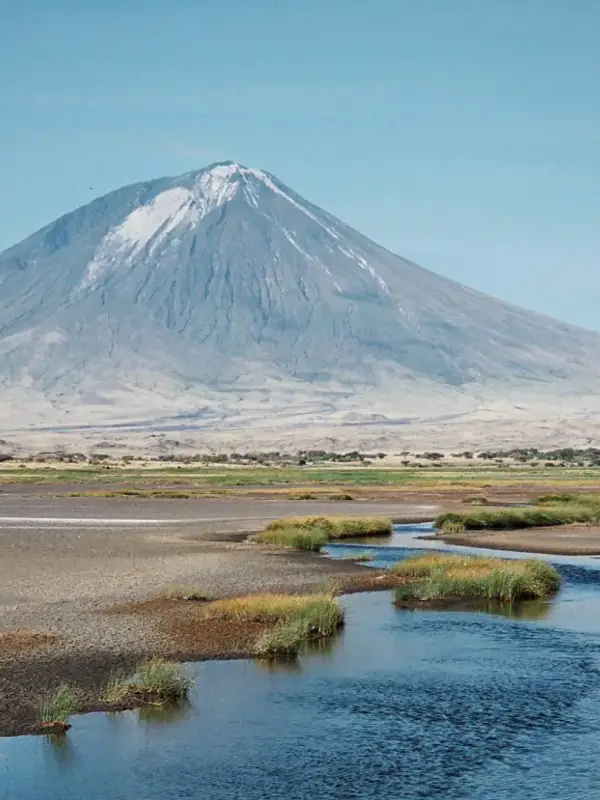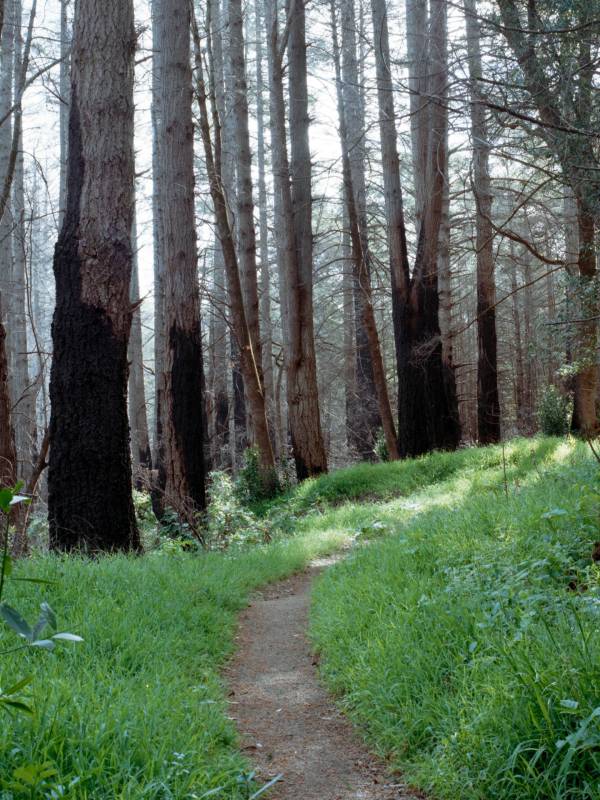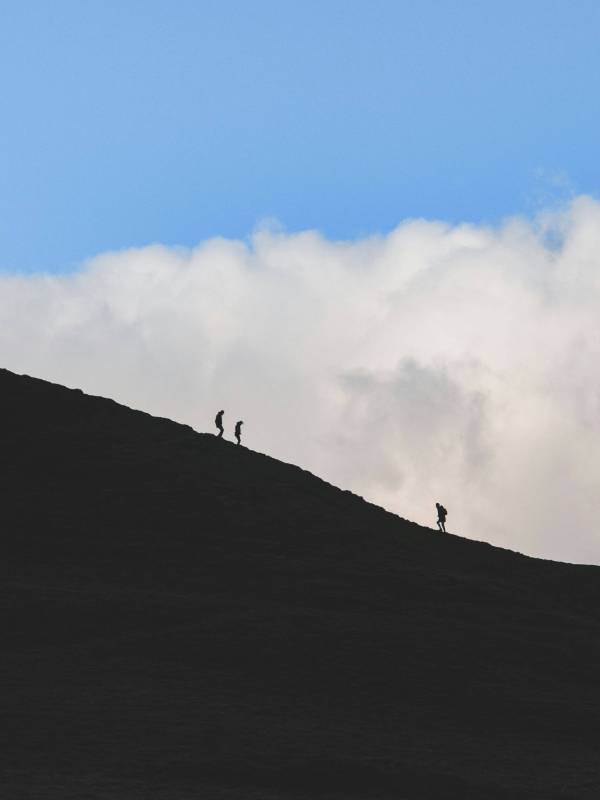Mountain Climbing
Best Mountain Climbs in Tanzania
Tanzania is a top destination for mountain climbing, offering diverse challenges for adventurers of all skill levels.
Mount Kilimanjaro, Africa’s highest peak draws climbers from all over the world to summit its peak. It is famous as the most ‘walkable mountain in the world’ because beginning climbers and experienced trekkers alike successfully complete the trek every year. The secret to reaching the top isn’t how strong or fast you are; but how persistent and how well you plan your trek. Mount Meru, the country’s second-highest mountain offers an adventurous trek through lush forests and wildlife-rich landscape up a massive dormant volcano.
Mount Ol Donyo Lengai, known as the “Mountain of God” to the Maasai, is Tanzania’s only active volcano. It is a challenging trek up the steep mountain sides, but the reward is breathtaking views of the Rift Valley and Lake Natron.
For nature lovers who enjoy hikes with beautiful scenery, consider a a single day hike to the top of Mount Longido, or a multi-day trek in the Usambara Mountains. While the other listed climbs are stand-alone mountains, the Usambaras are part of the Eastern Arc Mountains, a stunningly-beautiful chain of high-altitude peaks, dotted with waterfalls and cloud rain forests. The important ecosystems found within this mountain range have endemic plants and are home to a plethora of vibrant chameleons.
Together, these mountains offer a blend of physical challenge, natural beauty, and cultural significance. Which will you climb?
Climb with us
Have questions?
Get in touch!
Experience the epitome of luxury with our tailor-made holidays, crafted exclusively for you. Every detail of your bespoke escape is thoughtfully curated to match your unique preferences. Book your dream getaway today and indulge in unparalleled elegance and comfort.
Frequently Asked Questions - Mountain Climbing in Tanzania
What are the main mountains to climb in Tanzania?
The primary mountains are Mount Kilimanjaro, Mount Meru, and Mount Ol Doinyo Lengai. Kilimanjaro is the highest mountain not only in Tanzania but in all of Africa, standing at 5,895 meters. The second-highest is Meru at 4,566 meters, and Ol Doinyo Lengai at 2,878 meters.
All of these mountains are technically volcanoes:
- Kilimanjaro – an extinct volcano
- Meru – a dormant volcano (last eruption over 100 years ago)
- Ol Doinyo Lengai – an active volcano that saw volcanic activity in 2017
Additionally, there is Mount Longido (2,637 m), which is a granite mountain situated near the border to Kenya, and the Usambara Mountains, which are part of the larger chain of Eastern Arc Mountains that cross through southeastern Tanzania.
Do I need technical climbing skills?
No technical skills are required to climb the mountains in Tanzania.
For Mount Kilimanjaro and Mount Meru, especially, we suggest good physical fitness and preparation for high altitudes.
Be prepared to hike for several hours each day and participate in acclimatization hikes to help adapt to the high elevations.
Mount Ol Doinyo Lengai is very steep. While you don’t need any special gear beyond hiking boots and trekking poles, be prepared to scramble in a few places near the top and be very careful on the steep descent.
Mount Longido and the Usambaras are both great hikes, suitable for beginners or advanced climbers alike. They require no technical skills to reach the top.
When is the best time to climb in Tanzania?
The best time to climb Kilimanjaro and Meru is during the dry seasons, either from late June to October or January to March.
For Ol Doinyo Lengai, the dry season is ideal, but the main consideration is a new eruption. The volcano is estimated to erupt every 20-40 years, but the area is under constant research to check geothermal levels, any changes or expected volcanic activity are taken seriously.
How long does a climb take?
While Kilimanjaro could be climbed in as little as 5 days, we do not suggest this, since it is only advised for experienced climbers with prior altitude acclimatization. We offer Kilimanjaro climbs from 6 – 8 days, on both Machame and Lemosho Routes. Teams interested in an additional acclimatization day can certainly be accommodated, as well. Extra acclimatization will increase your chances of reaching Uhuru Peak.
Mount Meru is a 3 or 4 day climb. We suggest 4 days, as it gives more time for descent and includes a walking safari in Arusha National park at the end of the trek.
Ol Doinyo Lengai is climbed in a single night (10-12 hrs total), but due to the remoteness of the location, it is good to set aside 2 or 3 days and include a visit to stunning Lake Natron and have plenty of rest after climbing all night.
Mount Longido can be climbed in a day.
Treks in the Usambara Mountains span 3-5 days, depending on the route you choose. Irente and Mambo Viewpoints are usually 3 days hikes, while climbs to the Chambolo Peak could take 5 days.
What should I pack?
Essential gear includes warm clothing, a good pair of hiking boots, a sleeping bag, and a headlamp. For Kilimanjaro, altitude sickness prevention is a good idea, talk to your doctor about using Diamox.
We also suggest trekking poles, especially for the three highest mountains; Kilimanjaro, Meru and Ol Doinyo Lengai
Rent Gear in Tanzania
There are arctic conditions atop Mount Kilimanjaro, and it is very cold and windy at the summit of Mt Meru, as well. If you are combining these climbs with a wildlife safari or beach vacation, you may not want to pack a heavy jacket, rain gear or winter hat. Fortunately, you don’t have to! You can rent these items on-location in Tanzania. The gear is in excellent condition and is a great option for first-time climbers who do not want to invest in equipment they may only use once or twice. This is a budget and eco-friendly option.
Our Travellers Reviews
Outstanding tour operator
I can't say enough good things about Bryson and Petit Maasai. Bryson handled our last-minute trip to Tanzania like he'd been working on it for months instead of a handful of days after we connected about a week before our family arrived.Awsome
Exciting trip!!! Bryson made a private tour with masai mbome & we had a rest in mountains near Ngorongoro - everything was awsome!!! Morevover, all of our individual things we re made with great discount!Mike is great ranger too!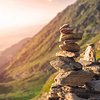
Kilimanjaro With Petit Maasai safaris- 5 stars!!!
We book 7 days Kilimanjaro with Petit Maasai safaris after having the safari with another company and we made it with a brilliant guide to the summit. We took the Lemosho route, starting in the rain forest and approached the camp via various tents campsites.
A great experience!
We did a safari in the northern parks of Tanzania with Petit Maasai Safaris and it was a great experience! The guide and the cook were really professional and nice with us, trying to make us feel comfortable and to satisfy our requests. Thanks a lot!